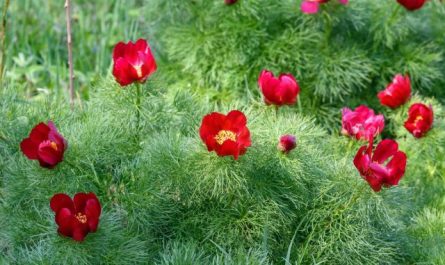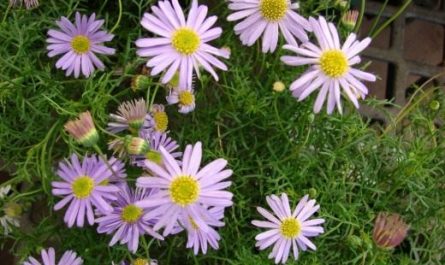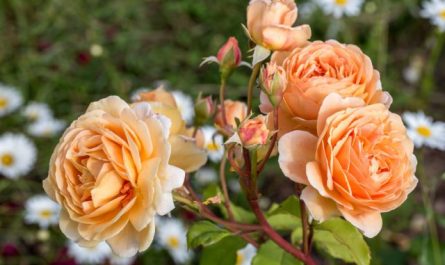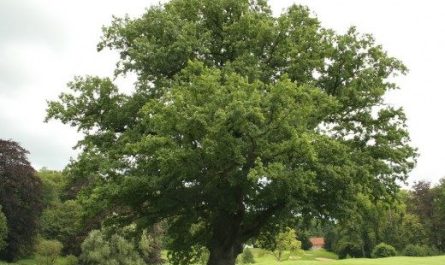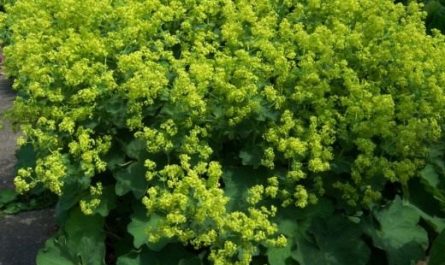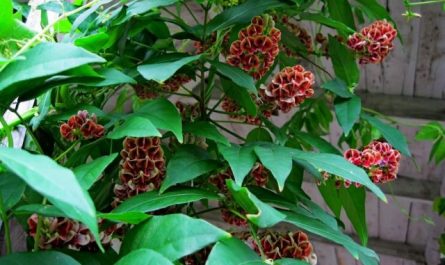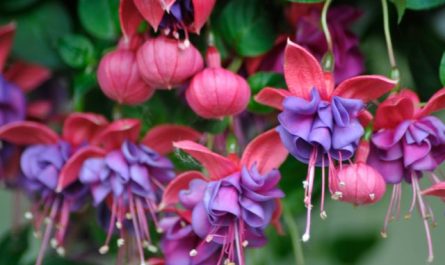Grown in regions with harsh winters only as an annual, argyranthemum is one of the most abundantly flowering garden crops. This large, almost gigantic for an annual plant, looks like a full-fledged bush and is most often grown in containers. Delightful flowering, lasting from July until the autumn cold, allows you to admire the scattering of classic daisy baskets with a bright yellow core. Growing argyranthemum is not so easy, but in the beauty of flowering, only its relatives – potted chrysanthemums – can compete with it.

Unusual characteristics of annual argyranthemum
Argyranthemums are better known to us as daisy chrysanthemums. Previously, these plants were classified as belonging to the same genus as all chrysanthemums, but thanks to active selection and research, today they are considered as an independent genus, including more than 20 species of plants.
Argyranthemum fruticosa – the most popular species native to the Canary Islands. The popular nickname of argyranthemum is “daisy” in our country and “Parisian daisy” in Europe – which describes its flowering perfectly.
Argyranthemum develops as a wide bush from 30 cm to 1 meter high. The cushion of leaves and shoots seems lush, solid, surprisingly lacy. The pinnately dissected leaves of this annual are distinguished by a silvery or surprisingly bright green color. They are collected in a lush basal rosette. Inflorescences appear in July, on the tops of the branches. They are very similar to daisies in argyranthemum both in shape and in color palette. Bright yellow flowers form the center, and ligulate flowers in one or several rows create a beautiful shining halo. Argyranthemum sometimes has a shortened row of ligulate flowers in the center of the flower, which brings it closer to anemone.
The color palette of argyranthemum includes white, soft cream, yellow, pink, apricot colors. Usually the coloring is represented by the most delicate, light shades, close to white.

Use in garden design
In our country, argyranthemum is grown as a classic container annual or as a large annual shrub that can create spectacular accents in any garden composition.
It looks good in flower beds and borders, where it creates bright spots of color. But argyranthemum reveals its qualities most fully when grown in containers. It can be placed as a guard at the entrance to the house or on the terrace, decorate a potted garden, create a special atmosphere in a corner for relaxation. Argyranthemum in pots also looks great when placed in a flower bed to enhance the effect of abundant flowering. Potted argyranthemums, thanks to accelerated growth, appear on sale already in the spring and can be used to decorate the garden until the very first frosts. In order for the bushes to be super dense and look like a hat, they are often treated with growth inhibitors.
The bloom of argyranthemum, resembling a solid cloud of daisies, is increasingly used for standard plants: on a high stem, argyranthemum will outshine even roses.
The best varieties of Argyranthemum fruticosa include:
- blue-blue greenery of the variety “Dana» only up to 30 cm in height, developing in the form of a wide cushion with surprisingly touching inflorescences;
- cherry or pink argyranthemum cultivar group “Madeira“;
- variety group “La Rita» with white, light green and peach colors;
- variety ‘Sweety‘ about 70 cm high with very bright, almost screaming greenery and light pink inflorescences, which have an additional decoration in the form of a snow-white ring around the yellow tubular flowers in the center of the baskets;
- soft pink half-meter variety “Flamingo».
In addition to Argyranthemum fruticosa, it is also worth paying attention to:
- canary Argyranthemum madeira (Argyranthemum maderense);
- with dill-like greens Argyranthemum foeniculosum (Argyranthemum foeniculaceum);
- Argyranthemum pinnatisectum (pinnate-incised) succulent subsp. (Argyranthemum pinnatifidum ssp. succulentum), which is distinguished by its drought resistance;
- with yarrow-like foliage Argyranthemum Lemsa etc.



Conditions comfortable for argyranthemums
The habits of this annual are quite specific. Argyranthemum likes coolness and stable warmth, but does not welcome heat. Uniform growing conditions are difficult to recreate for it, and even greenhouses are not suitable, because argyranthemum suffers from other factors in them – too bright lighting and stagnant air.
When choosing lighting for argyranthemum, try to find a location with good, diffused lighting, but without direct sunlight. These crops do not like shading, but are not afraid of drafts.
Choose soils especially carefully. Only light, drained soils that drain water well and eliminate even the slightest risk of water stagnation are suitable for argyranthemum. In addition, this plant will only be able to bloom abundantly in very nutritious soil. Acidity is also important: neutral, slightly acidic or acidic soils are suitable for argyranthemum. It is best to choose loams for this plant. For container plants, choose substrates for flowering plants or universal soil mixtures.

Planting Argyranthemum
This plant should be transferred to open ground as soon as the threat of night frosts has passed. The same principle “works” for potted argyranthemums: the sooner it is exposed to familiar conditions, the better. Planting should be done carefully, without damaging the rhizomes, maintaining the usual depth level. The first weeks of watering should be intensive.
Watering for argyranthemum
This point of care is the most difficult. Argyranthemum does not like even the slightest over-watering, but at the same time requires not just frequent, but systematic watering. The soil should be constantly slightly moist, during a drought you can not delay watering.
Fertilizers for Argyranthemum
This plant produces an incredible number of inflorescences, and even in the most nutritious soil without additional feeding, argyranthemum can simply die from exhaustion. In order to enjoy the beauty of the plants, you should apply complete mineral fertilizers for argyranthemums growing in open ground 2-3 times per season and feed potted plants every week, starting from the budding stage.

Pruning Argyranthemum
Argyranthemum will bloom abundantly even when wilted inflorescences begin to spoil its attractive appearance. But the lack of pruning will definitely affect the duration of flowering. Withered inflorescences of this annual plant should be removed from the bushes in a timely manner (of course, if you want the argyranthemum to bloom before the cold weather arrives).
Argyranthemums are true harbingers of the first frosts. They seem to sense the first cold and begin to wither even before they arrive. Immediately after the dying process begins, remove the plant completely and destroy it.
If you want to maintain a compact growth form, create dense, neat cushion-like bushes, then pinch the tips of the branches and thus form the crown.
Diseases and pests
Argyranthemums are often affected by powdery mildew, but they are only vulnerable to it in the fall. At the first signs of the disease, the plants should be dug up and destroyed without delay.
Propagation of Argyranthemum
This annual plant is propagated both by cuttings and by seeds.
seed Argyranthemum germinates under standard conditions, provided that it is sown in early spring under glass or film. Young plants can be planted in containers as they grow, and they are transferred to open ground only after the last night frosts have disappeared.

Cutting best preserves the varietal characteristics of the plant and allows you to get large bushes faster. Cuttings are cut at the end of summer or in the spring, keeping the mother plants in a light, cool place until the next year, when it will be possible to cut better rooting cuttings. When cuttings are taken in the summer, young plants need to be grown indoors until the warm weather arrives, often with lighting, so most often it is the mother plants that are saved.
